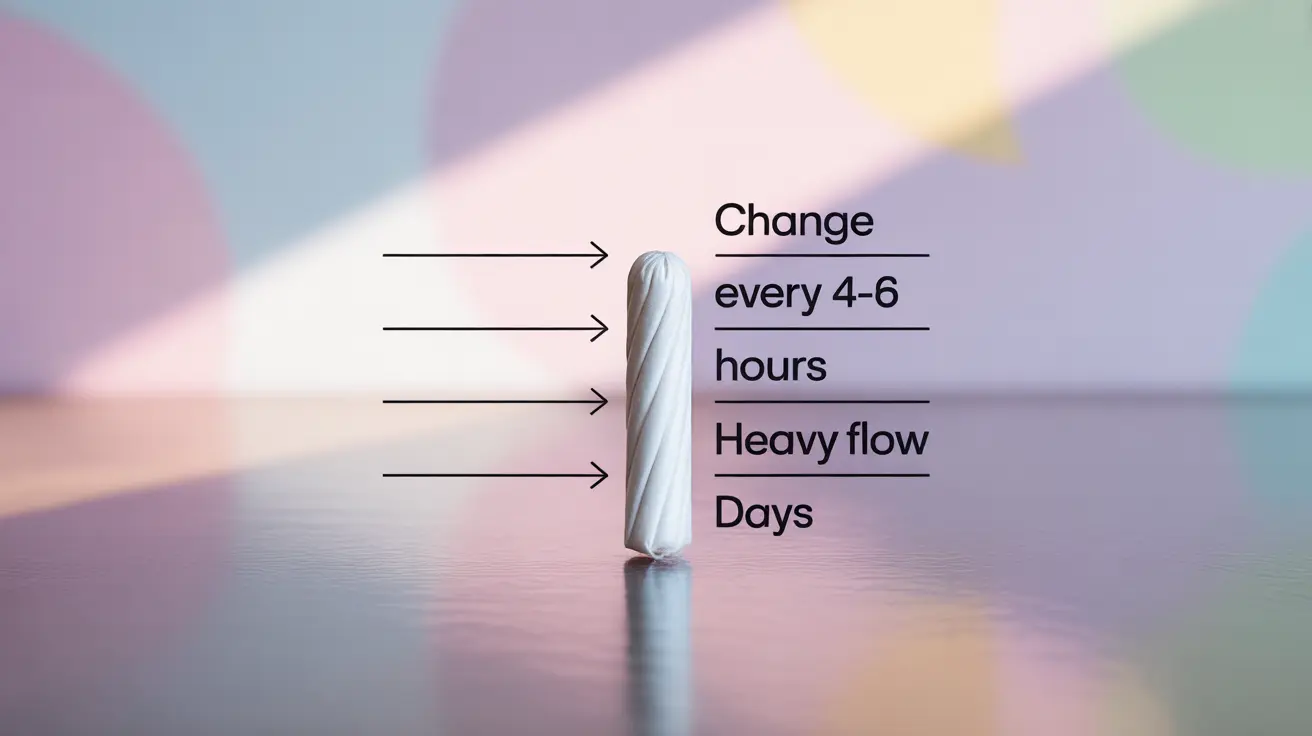Managing heavy menstrual flow days can be challenging, especially when it comes to determining the right frequency for tampon changes. Understanding the proper timing and best practices for tampon use is crucial not only for preventing leaks but also for maintaining optimal menstrual and overall health.
This comprehensive guide will help you navigate tampon use during heavy flow days, covering everything from recommended changing intervals to important safety considerations and warning signs to watch for.
Recommended Changing Frequency During Heavy Flow
During heavy menstrual flow days, you should change your tampon every 4-6 hours, or more frequently if you notice breakthrough bleeding or leakage. Some people may need to change their tampons as often as every 2-3 hours during their heaviest days. Never exceed 8 hours with any tampon, regardless of absorbency level.
Choosing the Right Absorbency
Select a tampon absorbency that matches your flow level. During heavy days, you might need to use super or super plus tampons, but it's important to switch to regular absorbency when your flow lightens. Always use the lowest absorbency necessary to manage your flow effectively.
Safety Guidelines and Best Practices
To ensure safe tampon use during heavy flow days, follow these essential guidelines:
- Change tampons regularly, at least every 4-6 hours
- Never wear a tampon for more than 8 hours
- Switch to a lower absorbency when your flow decreases
- Wash your hands before and after insertion
- Consider alternating between tampons and pads, especially during very heavy days
Understanding TSS Risk Factors
Toxic Shock Syndrome (TSS) is a rare but serious condition that can be associated with tampon use. While the risk is low with proper use, it's important to be aware of prevention strategies, especially during heavy flow days when you might be tempted to use higher absorbency tampons for longer periods.
Minimizing TSS Risk
To reduce your risk of TSS, avoid using super-absorbent tampons longer than necessary, maintain proper hand hygiene, and never exceed the recommended maximum wear time of 8 hours.
Warning Signs to Watch For
Be alert for these potential signs of complications during tampon use:
- Unusual vaginal discharge or odor
- Fever or chills
- Muscle aches
- Rash resembling a sunburn
- Dizziness or fainting
- Nausea or vomiting
When to Seek Medical Attention
Consult your healthcare provider if you experience extremely heavy bleeding that requires changing tampons more frequently than every 2 hours, or if you notice any symptoms of TSS. Additionally, seek medical advice if your period consistently causes significant disruption to your daily activities.
Frequently Asked Questions
How often should I change my tampon on heavy menstrual flow days to prevent leaks and infections? During heavy flow days, change your tampon every 4-6 hours, or more frequently if needed. Never exceed 8 hours, and change immediately if you notice any leakage.
What is the safest maximum time to keep a tampon in during a heavy period? The absolute maximum time to keep any tampon in is 8 hours, but during heavy flow days, you'll likely need to change it more frequently, typically every 4-6 hours or sooner.
Can using higher absorbency tampons all day increase my risk of toxic shock syndrome (TSS)? Yes, using tampons with higher absorbency than necessary can increase your risk of TSS. Always use the lowest absorbency needed to manage your flow and change regularly.
What are the signs I should watch for that indicate a tampon might be causing health problems during heavy bleeding? Watch for fever, unusual discharge or odor, rash, dizziness, muscle aches, and any symptoms resembling flu. These could indicate TSS or other complications requiring immediate medical attention.
When should I see a doctor about needing to change tampons more frequently because of heavy menstrual bleeding? Consult a healthcare provider if you need to change tampons more frequently than every 2 hours, experience severe cramping, or if heavy bleeding significantly impacts your daily activities.




